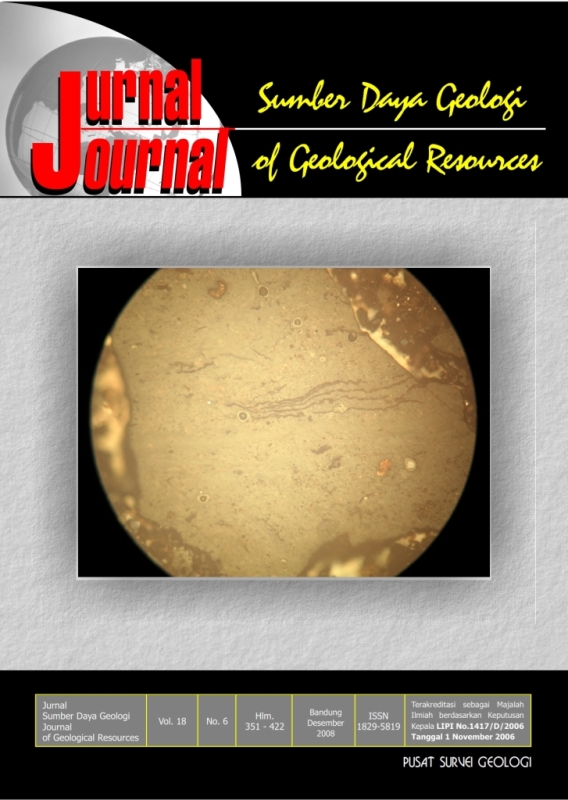SUMBER DAYA ALAM DI KAWASAN PESISIR PULAU NUSA PENIDA DAN SEKITARNYA, KABUPATEN KLUNGKUNG, NUSA TENGGARA BARAT
DOI:
https://doi.org/10.33332/jgsm.geologi.v18i6.256Abstract
Nusa Penida, Lembongan and Ceningan islands consist of Pliocene reef limestone at some place. The limestone forms dolomite characterized, white in color and soft. The southern coastal of Nusa Penida Island exposed bedded limestone, re-crystallization and weakened. Karts topography widely spread in this island, however it has been eroded.
The coastal zone of Nusa Penida, Lembongan and Ceningan islands have been utilized for sea water tourism and sea grass cultivation. However, these areas still have various renewable energy resources which have not yet been developed optimally. In order to support Renewable Energy Park Programs in Nusa Penida, the current energy of Ceningan strait can be used for electricity power energy.
Â
Keywords: coastal, renewable energy, current and limestone.
Downloads
References
Astjario, P., 1995. Buku Panduan Penelitian Pantai Dengan Permasalahannya, Sie Geol. Wil. Pantai, Bid. Geol. Kelautan, Pusat Pengembangan Geologi Kelautan.
Dolan, R. Hayden, B.P., Hornberger, G., Zeiman J., and Vincent, M.K., 1972. Classification of the coastal environment of the wold. 1. The Americas charlottesville, Va: Department of environmentals Sciences, University of Virginia, Tech.Rept. 1, 163 p.
Lovelock, C., 1993. Field guide to the Mangroves of Queensland, Published by the Australian Institute of Marine Science.
Suprapto, TA., 2007. Buku Pegangan Pengolahan Data Digital Citra untuk Pemetaan Geologi Lingkungan Pesisir Dengan Perangkat Lunak ER Mapper, Bid.Prog.Inf, Puslitbang Geologi Kelautan.
Downloads
Published
Issue
Section
License
Authors who publish articles in Jurnal Geologi dan Sumberdaya Mineral (JGSM.Geologi) agree to the following terms:
- Authors retain copyright of the article and grant the journal right of first publication with the work simultaneously licensed under a CC-BY-NC or The Creative Commons Attribution–ShareAlike License.
- Authors are able to enter into separate, additional contractual arrangements for the non-exclusive distribution of the journal's published version of the work (e.g., post it to an institutional repository or publish it in a book), with an acknowledgment of its initial publication in this journal.
- Authors are permitted and encouraged to post their work online (e.g., in institutional repositories or on their website) prior to and during the submission process, as it can lead to productive exchanges, as well as earlier and greater citation of published work (See The Effect of Open Access)










